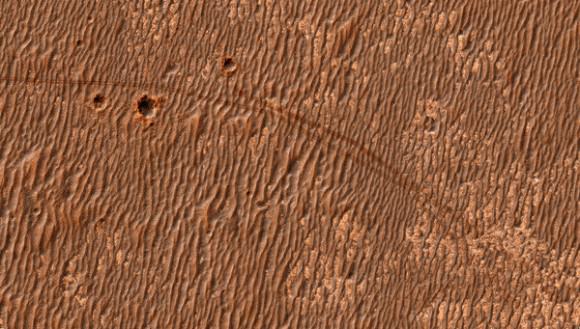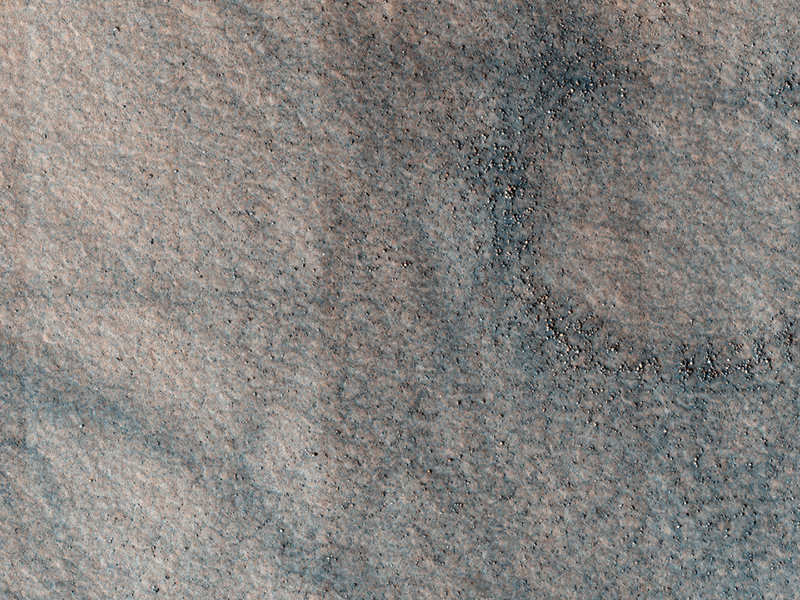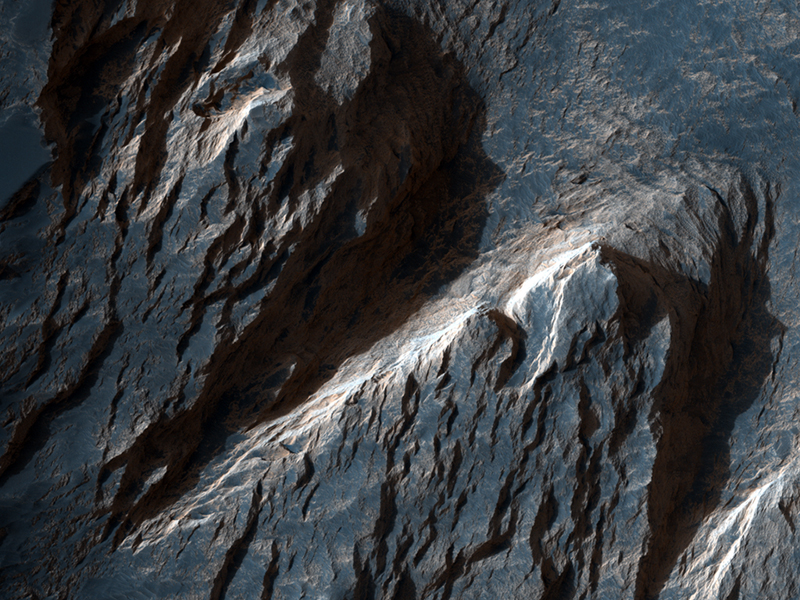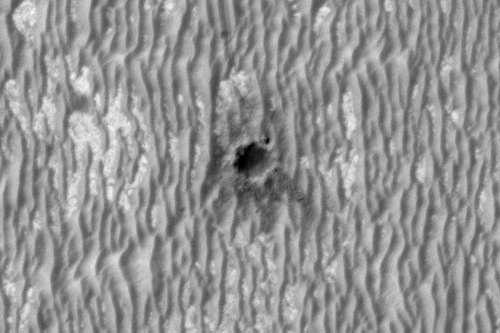[/caption]
It has been a while since I’ve posted a batch of new images from the Mars Reconnaissance Orbiter HiRISE camera, and what a treat when I saw what had just been released! This image shows the Mars Exploration Rover Opportunity perched on the edge of Concepción Crater in Meridiani Planum, Mars. This image was taken by HiRISE on February 13, 2010, on sol 2153 of Opportunity’s mission on Mars. If you look closely, you can see rover tracks in the ripples to the north and northwest of the rover! Wow! See below for a wonderful colorized close-up version by Stu Atkinson that shows the tracks very clearly. Scientists use these high-resolution images (about 25 cm/pixel) to help navigate the rover. In addition, rover exploration of areas covered by such high-resolution images provides “ground truth” for the orbital data. Oppy has moved along from Concepcion and is now heading towards a set of twin craters. You can check out Stu’s blog Road to Endeavour to see what Opportunity is seeing these days. One milestone (meterstone?) Oppy recently reached was hitting 20 km on her odometer and she seems to continue to be in great operating condition. Go Opportunity! Click here to be able to download larger versions of the image.


This image is interesting because of all the interesting different aspects you can find if you look closely. The surface must be relatively young because there are no recent impact craters. There are numerous dust devil tracks crisscrossing across the image. Plus, there are polygon features in the soil – the same features seen around the Phoenix lander area which are produced by repeated expansion and contraction of the soil-ice mixture due to seasonal temperature changes. This is the Vastitas Borealis region on Mars’ northern plains.
Another interesting feature is the circle of boulders that appears on the right side. Is there an impact crater buried under shifting Martian sand? A visit by a rover or human could tell us for sure.
The image covers approximately 400 x 250 meters (350 x 225 yards).

This is an impressive looking region in Melas Chasma. Scientists say the layers are sedimentary in origin, but there are many processes that could have deposited them, such as volcanic airfall from explosive eruptions, or dust-size particles settling out of the atmosphere due to cyclic changes, and deposition in standing bodies of water.
See more great images at the HiRISE website.


The quality of images from MRO never cease to amaze.
Nancy: ‘It has been awhile since ‘ – a while!
Yummy stuff there Nancy!
Images by Stu Atkinson…Any relation?
Aqua — No relation, But its a great name, don’t you agree?
Indeed.. friends in Maine are Atkinson/Michaud’s…